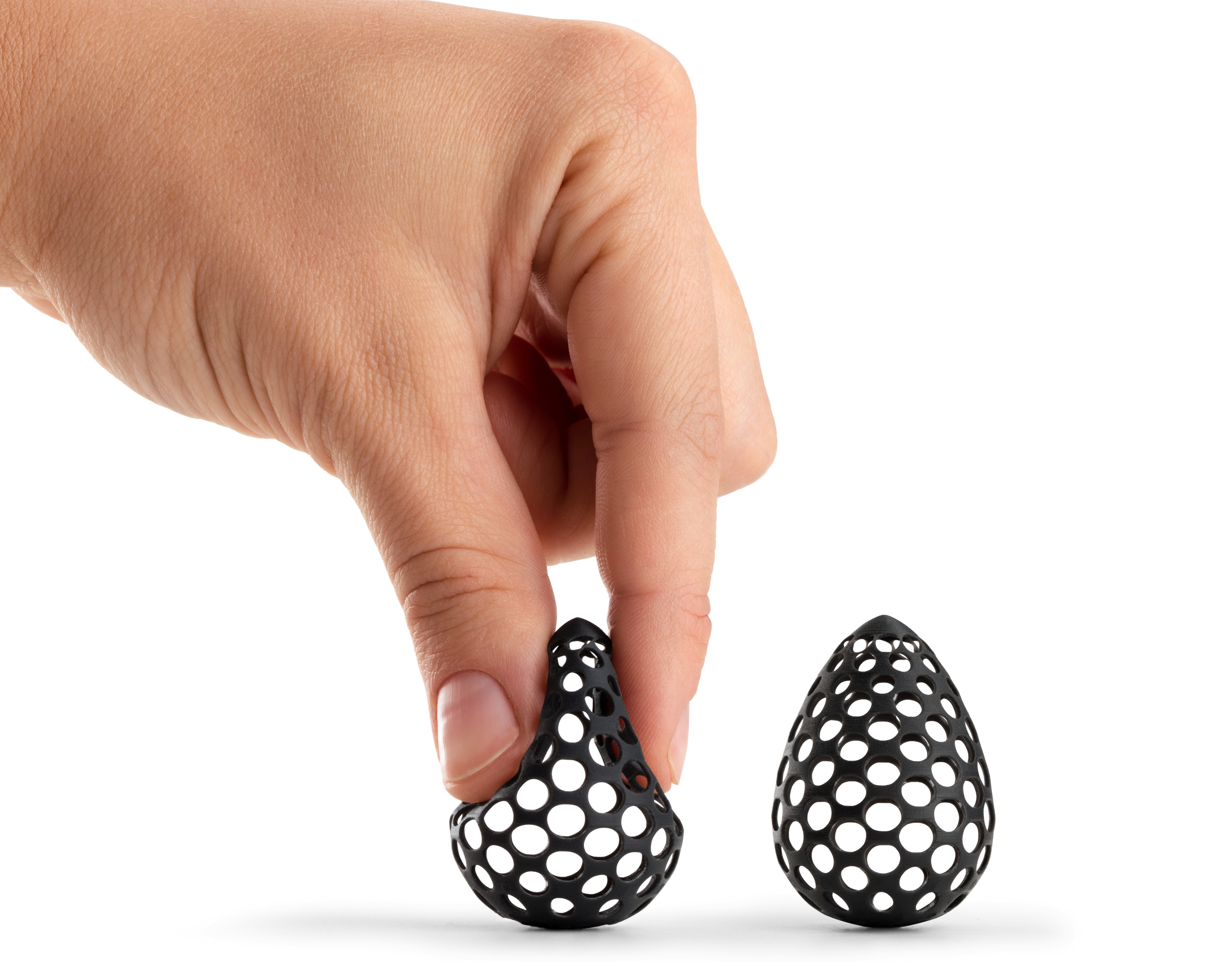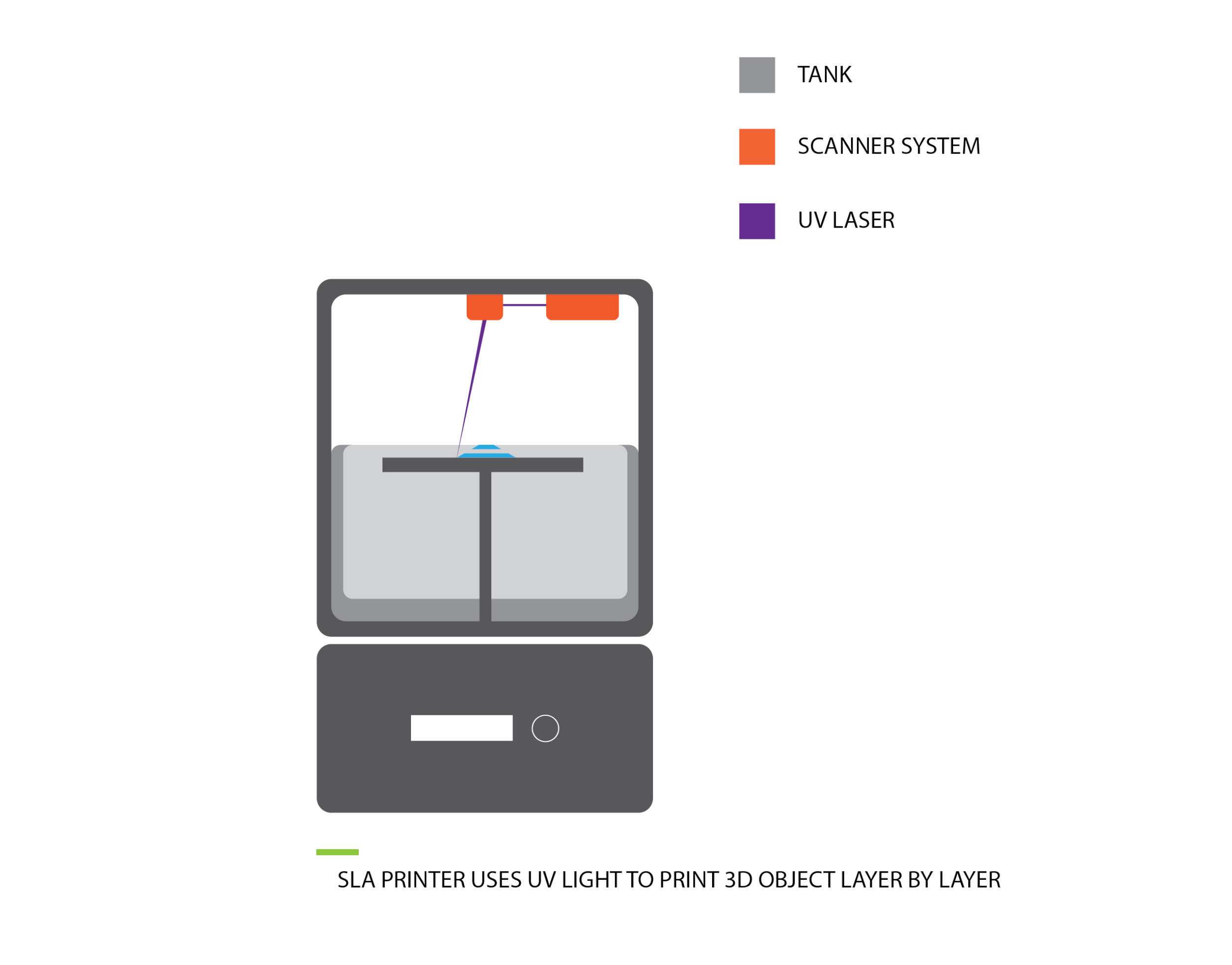Example of an egg shaped form 3D printed in a flexible material using an SLA 3D printer. (Source: http://bit.ly/2k4hajb)
Understanding the different types of materials used across 3D printing technologies like FDM, SLA and SLS is a very important step in the design process. This is because choosing the correct material for a full three-dimensional (3D) object decides what it will look like once 3D printed, its properties (for example: hard versus flexible), and how it can be used in the real world.
Example of thermoplastic filaments used with FDM 3D Printing. (Source: http://bit.ly/2wXEctw)
FDM uses a part known as a filament to print out full 3D objects, layer by layer. A filament is a reel of material, usually a special type of plastic, called a thermoplastic. Thermoplastics are special because they can be softened using heat and can then instantly cool down to form very hard 3D objects, which can be tested on repeatedly- even at an industrial scale. Examples of different types of thermoplastics include; polylactic acid (PLA), acrylonitrile butadiene styrene (ABS), polystyrene (PS) and many others. Each of these thermoplastics is important to FDM technology because they let users print out full 3D objects for different uses. PLA is interesting because it is made from corn starch and can be composted. So it can degrade over time under the right conditions.
An SLA 3D Printer turning resin from liquid to solid. (Source: http://bit.ly/2ytU47W)
SLA technology uses a liquid plastic material called a photopolymer resin to print out full 3D objects, layer by layer. This photopolymer resin changes from a liquid state to a solid state when exposed to UV light. SLA photopolymer resins are also thermosetting plastics. This means that once 3D objects are finished, they are permanently set in their form and cannot be melted down and reshaped like thermoplastics. SLA photopolymers have limited color choices but can be used to create very smooth and detailed 3D prints. This makes SLA printers very popular in certain industries like engineering, dentistry and jewelry.
Wood is an option for SLS 3D printing. (Source: http://bit.ly/2wXZ6II)
SLS technology uses powdered forms of plastic, ceramic, glass and metal to print out full 3D objects, layer by layer. This technology uses a laser to turn these materials from powdered layers to solid layers, and is used to create complex 3D objects because supports are not needed. This makes SLS technology particularly exciting, which is why a lot of new types of powdered materials such as wood are being made.
The list of materials that is available for 3D Printing is rapidly evolving, and increasingly, materials are created to be sustainable and biodegradable too. Materials are an exciting area of 3D Printing, and each is driving exciting new development for the other: materials are being developed for 3D printing, expanding the range of applications and possibilities for 3D printing technologies; and as 3D printing grows, there is more interest in developing and exploring new or existing materials with different 3D printing technologies!























